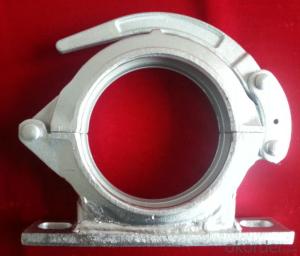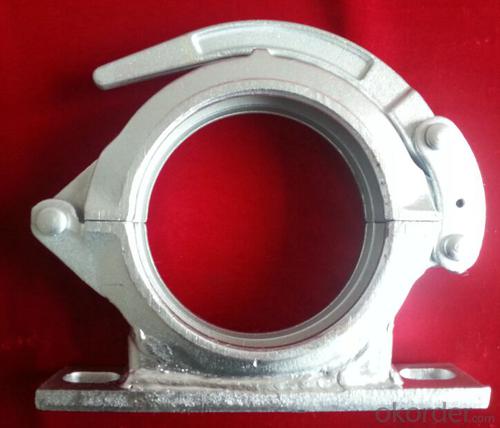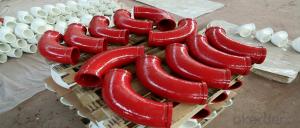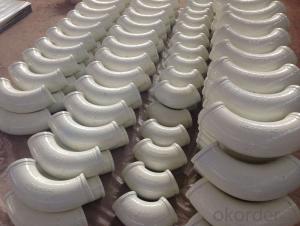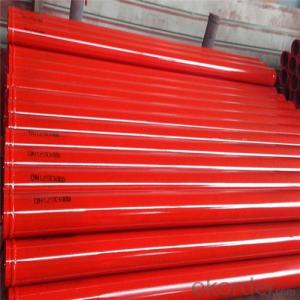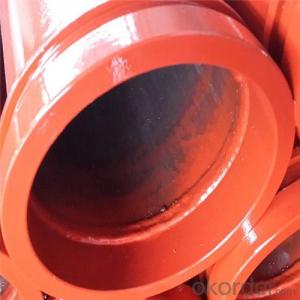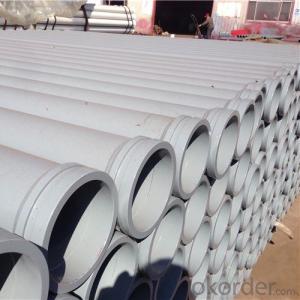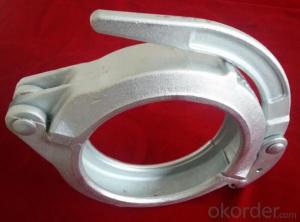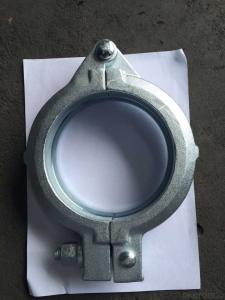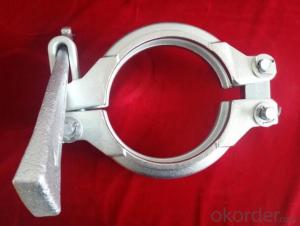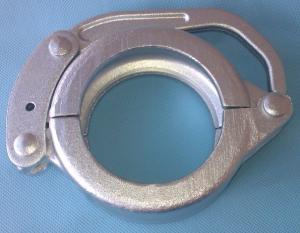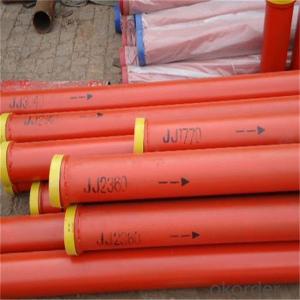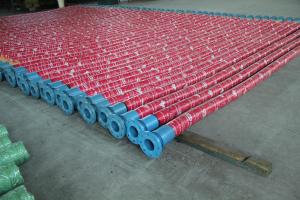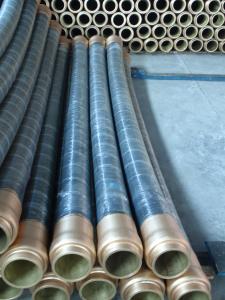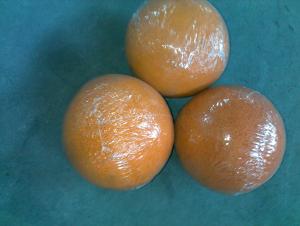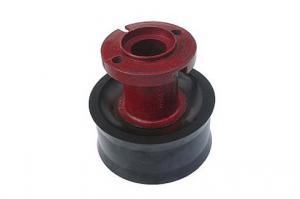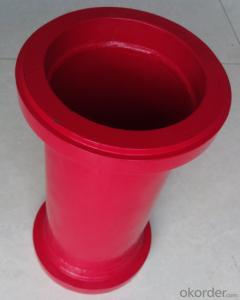Forged Concrete pump Coupling DN125 with High Quality
- Loading Port:
- Tianjin
- Payment Terms:
- TT or LC
- Min Order Qty:
- 5 pc
- Supply Capability:
- 5000 pc/month
OKorder Service Pledge
OKorder Financial Service
You Might Also Like
Product Description:
Name:Forged Concrete pump Coupling
Type: Snap coupling, Bolt coupling, Wedge Coupling, adjustable or mounting type
Dimensions: DN125, 5"
Process: Casting or Forging.
Surface treatment: Painted or Galvanized.
Notes: total series of concrete pump clamp for different brand concrete pump(PUTZMEISTER, SCHWING, CIFA, SANY, ZOOMLION, IHI, KYOKUTO Etc) available from us, such as Snap coupling, Bolt coupling, Wedge Coupling, adjustable or mounting type .
Scope of Application of the Equipment
Forged Concrete pump Coupling widely used on concrete pump truck, concrete placing boom, trailer concrete pump etc, for concrete delivery pipe connection.
Our concrete pump clamps have been successfully exported to many countries from 1998, Our main markets as below: Middle East, Southeast Asia, America, Brazil, Italy, Russia, South Africa etc
Aiming at the largest concrete pump parts manufacturer, and reliable, professional supplier in China, we can supply concrete pump elbows, delivery pipes, casting or forging couplings, end rubber hoses, rubber pistons, tungsten wear plates, delivery cylinders, and other hydraulic parts, one stop service for your concrete pump parts and accessory business.
Product Advantages:
Forged Concrete pump Coupling are durable, strong, and resists corrosion.
Main Product Features:
· Premium quality
· Prompt delivery & seaworthy packing (10-20 days after receiving deposit)
Reliable performance
Easy and smooth operation
High safety.
· Professional Service
· Competitive pricing
Product Specifications:
Every 300pcs put in one seaworthy wooden box, and 20 boxes in one 20feet container.
FAQ:
Q1: Why buy Materials & Equipment from us?
A1: All products are through its ISO certifications, adhere to the highest standards and a commitment to supply chain safety and customer satisfaction.
Q2: How do we guarantee the quality of our products?
A2: We have established an advanced quality management system which conducts strict quality tests at every step, from raw materials to the final product. At the same time, we provide extensive follow-up service assurances as required.
Q3: How soon can we receive the product after purchase?
A3: Within three days of placing an order, we will begin production. The specific shipping date is dependent upon international and government factors, but is typically 10 to 30 workdays.
Q4: If we can produce some Forged Concrete pump Coupling according to customers request?
A4: Yes, we can produce Forged Concrete pump Coupling according to the difference country situations and different concrete pump to make it suitable to the market and customers. We have very professional technical team to make the design.
Q5: How to make a quick resolution for after service?
A5:We have overseas branches all-around of world, IF needed, the seller shall dispatch 2 engineers to the buyer's site for supervision of training. The buyer shall make available of necessary facilities &skilled personnel at site for training.
Images:
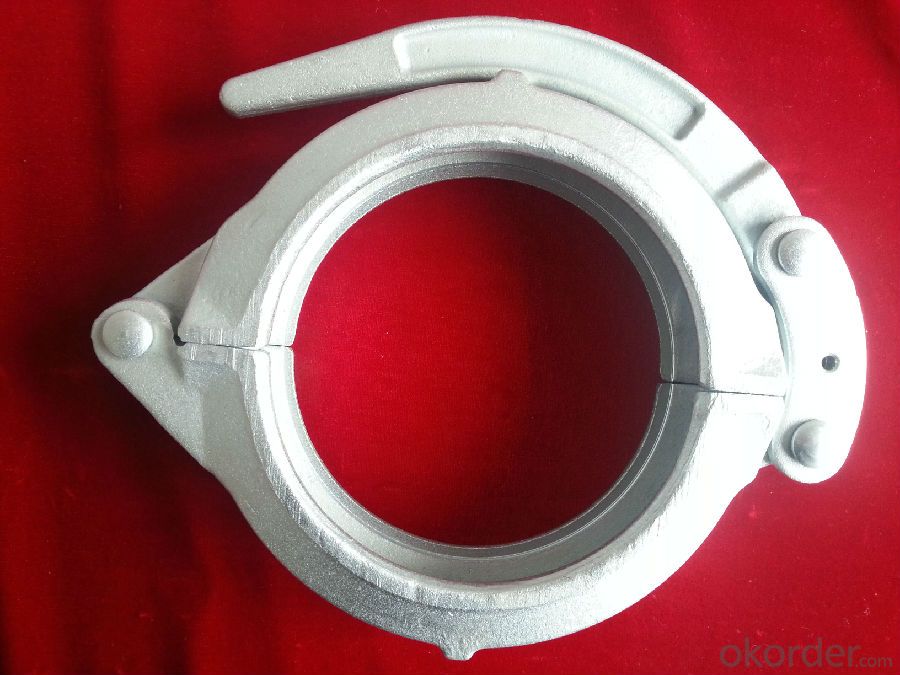
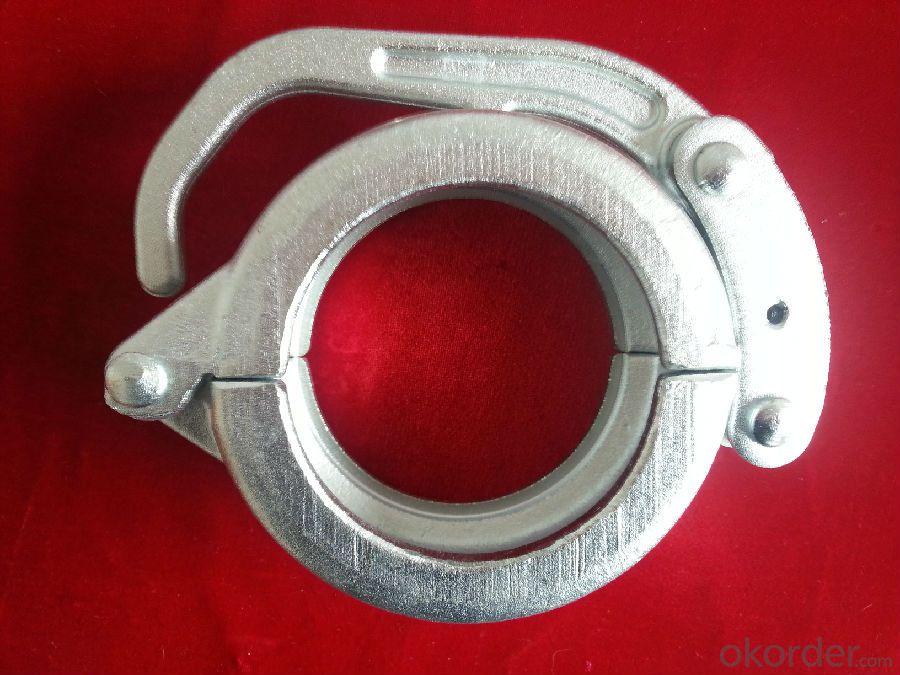
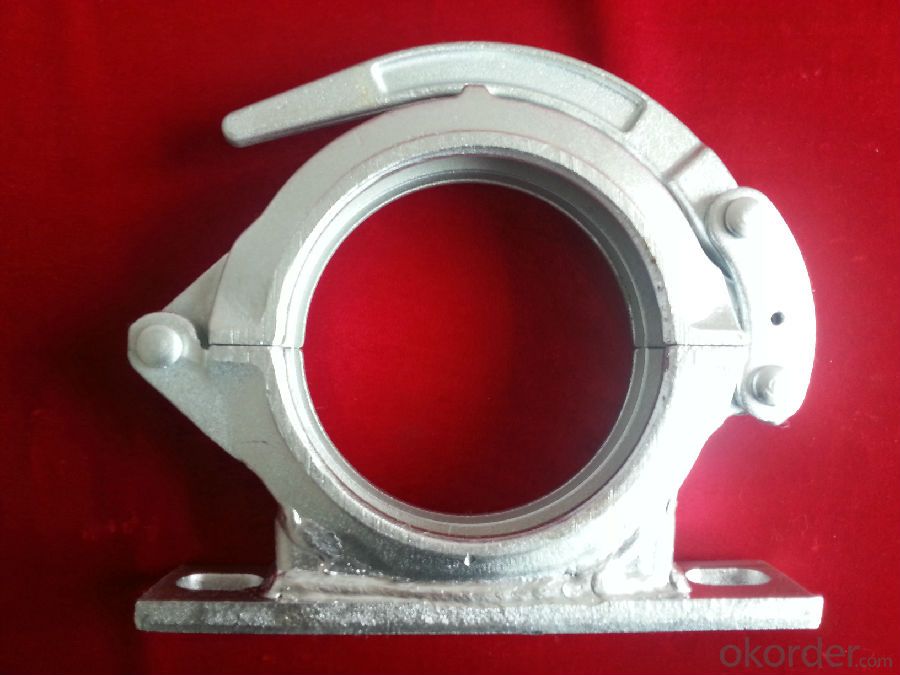
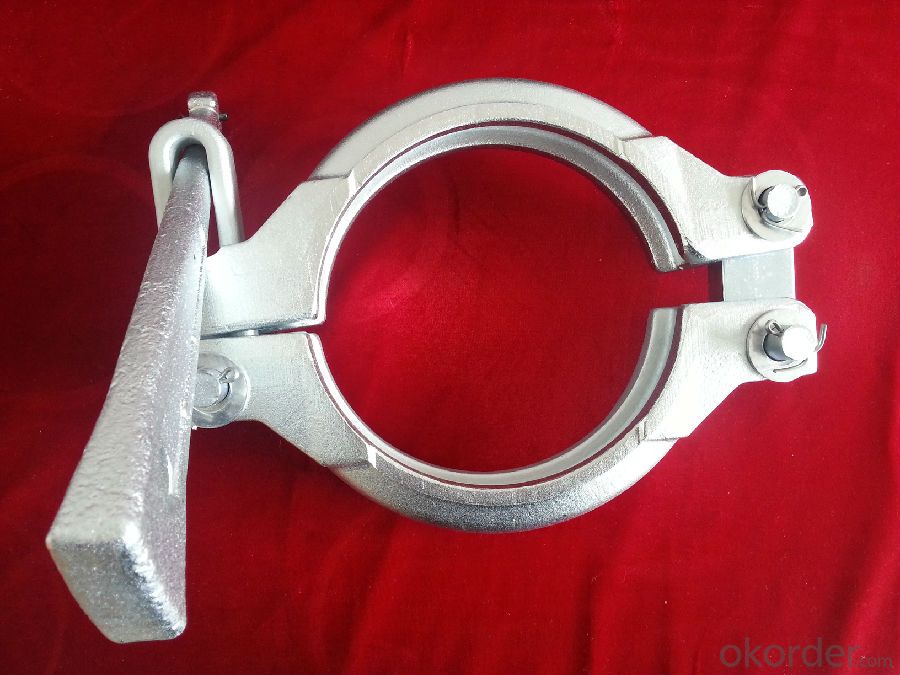
- Q: Are there any specific guidelines for the disposal of hydraulic fluids used in concrete pump spare parts?
- Yes, there are specific guidelines for the disposal of hydraulic fluids used in concrete pump spare parts. These guidelines typically vary depending on local regulations and environmental laws. It is generally recommended to follow the manufacturer's instructions for proper disposal methods. This may involve recycling the hydraulic fluids or disposing of them at designated waste management facilities to ensure minimal environmental impact.
- Q: How can one extend the lifespan of concrete pump spare parts?
- To extend the lifespan of concrete pump spare parts, there are several measures that can be taken: 1. Regular maintenance: It is crucial to perform regular maintenance on the concrete pump spare parts. This includes cleaning, lubricating, and inspecting the parts for any signs of wear or damage. By addressing any issues early on, you can prevent further damage and prolong the lifespan of the parts. 2. Proper storage: When not in use, it is important to store the spare parts in a clean and dry environment. Exposure to moisture, dust, and other contaminants can lead to corrosion and deterioration of the parts. Storing them in a designated area with appropriate protection can help prevent these issues. 3. Quality parts: Investing in high-quality spare parts can greatly influence their lifespan. Opting for reputable brands and manufacturers that produce durable and reliable parts can ensure their longevity. Although they may be more expensive initially, they will likely save you money in the long run as they will require less frequent replacement. 4. Proper usage: Following the manufacturer's guidelines and instructions for the concrete pump spare parts is crucial. Overloading or operating the equipment improperly can put excessive strain on the parts, leading to premature wear and tear. Using the parts within their recommended capacity and following proper operating procedures will help extend their lifespan. 5. Training and supervision: Ensuring that operators and maintenance personnel are properly trained and supervised can have a significant impact on the lifespan of concrete pump spare parts. Educating them on best practices, proper handling, and maintenance techniques will help prevent misuse or mishandling that can result in damage to the parts. 6. Regular inspections: Conducting regular inspections of the spare parts can help identify any potential issues early on. This can include checking for signs of wear, damage, or misalignment. By addressing these issues promptly, you can prevent further damage and extend the lifespan of the parts. By implementing these measures, you can significantly extend the lifespan of concrete pump spare parts, reducing downtime and improving efficiency in construction projects.
- Q: What is the concrete delivery pump?
- Currently mainly divided into gate valve, concrete pump and S valve concrete pump
- Q: Can I get spare parts for concrete pump hopper agitators and vibrators?
- Yes, spare parts for concrete pump hopper agitators and vibrators are generally available. These parts can be sourced from various manufacturers and suppliers specializing in construction equipment and machinery. It is recommended to contact the manufacturer of the concrete pump or the authorized dealer to inquire about the availability and pricing of spare parts for the hopper agitators and vibrators. Additionally, there are also online platforms and marketplaces that offer a wide range of spare parts for construction equipment, including concrete pump components. It is important to provide specific details about the make and model of the concrete pump to ensure compatibility and proper functioning of the spare parts.
- Q: How often should concrete pump pistons be replaced?
- The frequency of replacing concrete pump pistons can vary depending on several factors such as the type of pump, the quality of the pistons, and the intensity of usage. However, as a general guideline, concrete pump pistons should be inspected regularly and replaced whenever signs of excessive wear or damage are observed. Timely replacement is crucial to ensure optimal pumping performance and prevent potential breakdowns.
- Q: How does a hopper vibrator prevent concrete blockages?
- A hopper vibrator serves as a mechanical solution to avoid concrete blockages in construction equipment like concrete pumps and mixers. Its purpose is to apply vibrations to the hopper, which is the large container where the concrete is stored prior to pouring or transferring. Concrete blockages commonly occur due to the tendency of the material to settle and compact, particularly during prolonged storage or transportation. This can result in the clogging and obstruction of concrete flow, thereby impeding the construction process and potentially causing equipment damage. Through the utilization of a hopper vibrator, the vibrations are transmitted to the concrete within the hopper, effectively preventing settling and compaction. The vibrations loosen the concrete particles, ensuring they remain in a more fluid state. This facilitates a continuous and smooth flow of concrete, preventing any blockages or obstructions from arising. Furthermore, the vibrations from the hopper vibrator also aid in dislodging any existing blockages. The shaking motion can break apart concrete clumps or other debris obstructing the flow, enabling uninterrupted material movement. Overall, a hopper vibrator is an indispensable tool in construction equipment as it helps maintain a consistent concrete flow, thereby preventing blockages and ensuring the smooth and efficient operation of the construction process.
- Q: How often should carbide wear plates be replaced in a concrete pump?
- The replacement frequency of carbide wear plates in a concrete pump is dependent on various factors. These include the type and quality of the plates, the intensity of usage, and the specific operating conditions of the pump. Carbide wear plates are designed to withstand the abrasive nature of concrete and generally have a longer lifespan compared to traditional steel plates. However, they are not immune to deterioration and will eventually wear down over time. A good practice is to regularly inspect the wear plates and assess their condition. If there are visible cracks, excessive erosion, or a decrease in concrete flow performance, it is time to consider replacing them. Replacement intervals can vary, ranging from annual replacements to several years. To extend the lifespan of carbide wear plates, proper maintenance and care are crucial. This includes regular cleaning, ensuring proper lubrication, and avoiding excessive pressure or abuse during operation. By conducting regular maintenance, the wear plates can last longer and replacements can be less frequent. It is advisable to consult the manufacturer's guidelines or seek advice from a professional concrete pump technician to determine the specific replacement interval for carbide wear plates in a particular pump model. Their expertise and knowledge will provide accurate recommendations based on the specific conditions and usage of the concrete pump.
- Q: If the concrete pump valve jam how to judge and deal with?
- The method of hammering with a wooden hammer can be combined with a positive and reverse pump to make it clear; when the above method is invalid, the obstruction is serious
- Q: What are the indications of a clogged or damaged concrete pump filter?
- The indications of a clogged or damaged concrete pump filter can include decreased flow rate, loss of pressure, irregular or uneven concrete distribution, increased wear and tear on the pump system, and potential blockages or breakdowns in the pump.
- Q: How long do concrete pump spare parts typically last?
- There are several factors that can affect the lifespan of concrete pump spare parts. Generally, high-quality parts can last between 1,000 and 2,500 working hours. However, this estimate can be influenced by factors such as the type and brand of the spare parts, how often they are used, the quality of maintenance they receive, and the working conditions in which the concrete pump operates. Some spare parts for concrete pumps may have a shorter lifespan due to the wear and tear they experience during operation. For example, wear parts like rubber seals, pistons, and wear plates are more prone to damage and may need to be replaced more frequently. On the other hand, structural components like pipes, hoses, and hydraulic cylinders tend to last longer. Extending the lifespan of concrete pump spare parts relies on proper maintenance and regular inspections. Adequate lubrication, cleaning, and timely replacement of worn-out parts can significantly increase their durability. Additionally, the expertise and skill of the operator also play a role in the lifespan of the spare parts, as improper use or mishandling can lead to premature failure. While it is possible to estimate the average lifespan of concrete pump spare parts, it is important to consider the specific circumstances and conditions in which the concrete pump operates to determine their actual longevity. Regular maintenance, the use of high-quality parts, and proper usage will ultimately help maximize the lifespan of concrete pump spare parts.
Send your message to us
Forged Concrete pump Coupling DN125 with High Quality
- Loading Port:
- Tianjin
- Payment Terms:
- TT or LC
- Min Order Qty:
- 5 pc
- Supply Capability:
- 5000 pc/month
OKorder Service Pledge
OKorder Financial Service
Similar products
Hot products
Hot Searches
Related keywords
